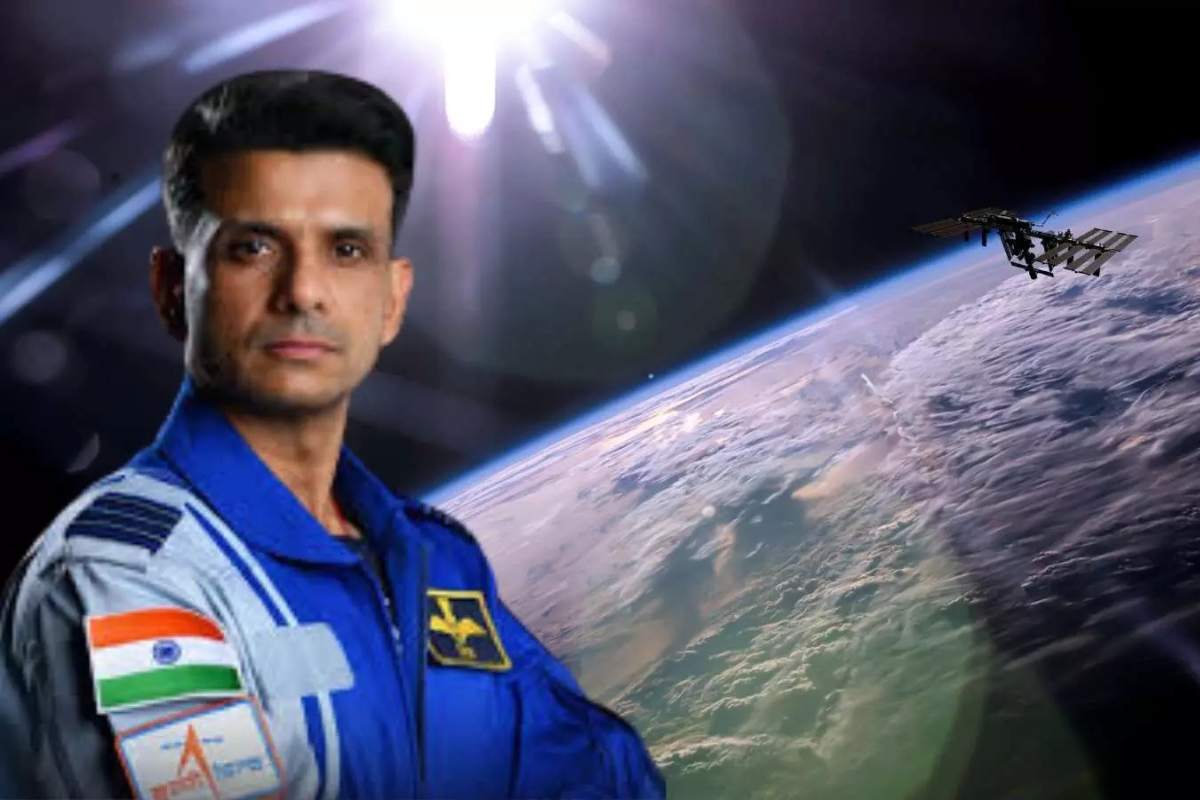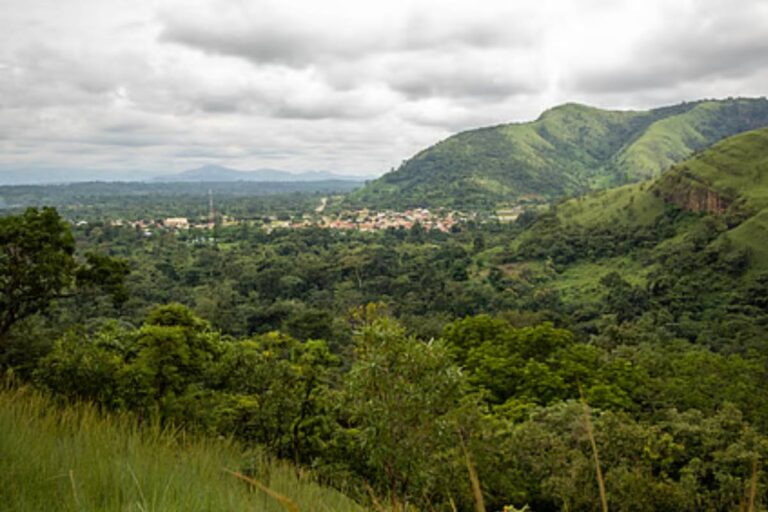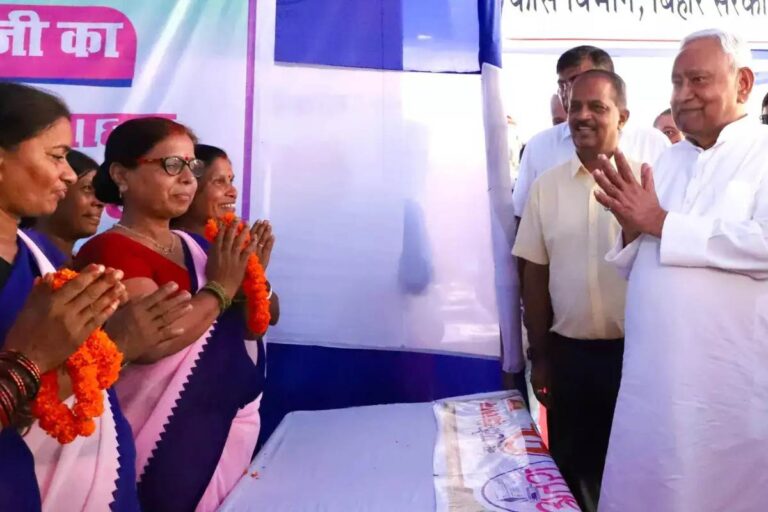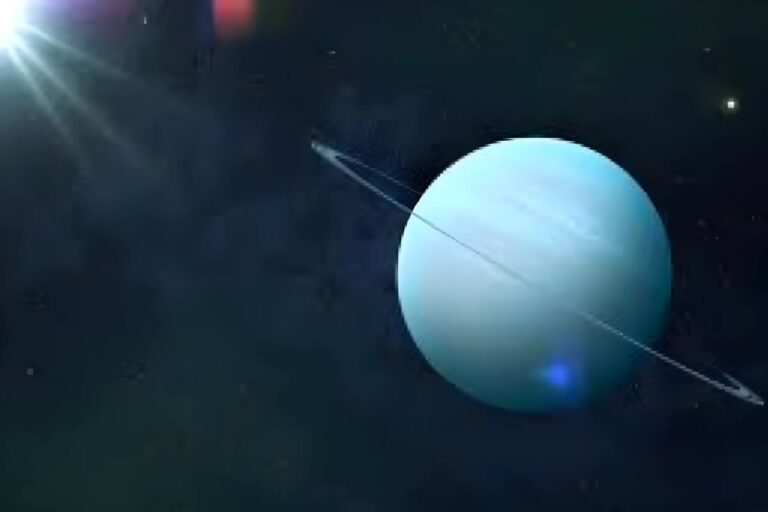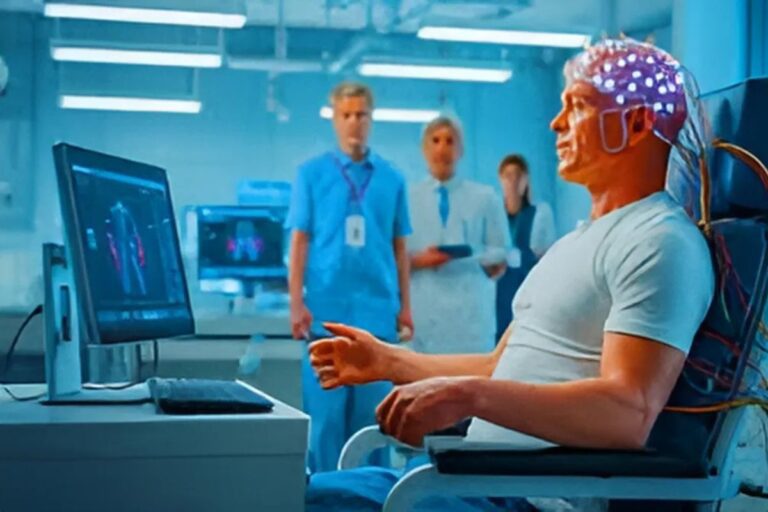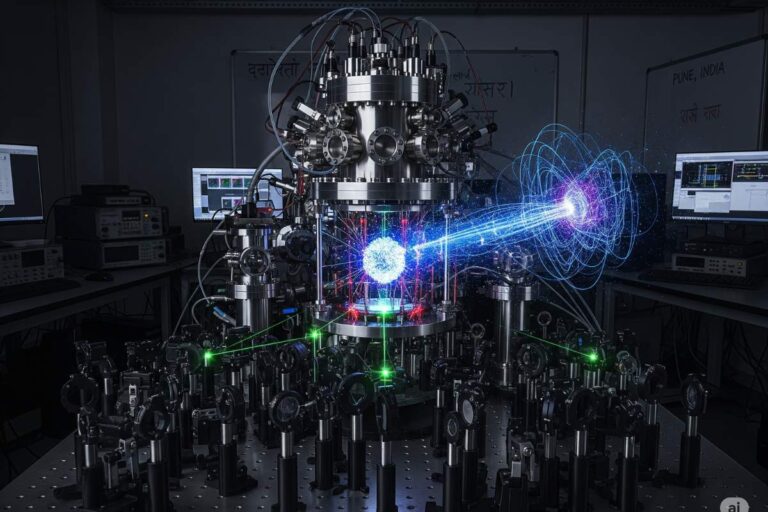A Glimpse from Orbit: India’s Moment in the Stars
Imagine the scene: the deep blue Pacific, a capsule descending, and then, a perfect splashdown. It’s the kind of moment that sends shivers down your spine, isn’t it? On July 15, 2025, Group Captain Shubhanshu Shukla, India’s very own space pioneer, returned to Earth after a truly historic 18-day scientific mission aboard the International Space Station (ISS). This wasn’t just
any space mission; this was India’s return to human space travel after a gap of four decades, something the whole country had been waiting with bated breath for. The Dragon Grace spacecraft, after gliding elegantly away from the ISS on July 14, 2025, achieved its pinpoint splashdown off the coast of California, bang on time, at about 3:03 PM IST.
Who is this low-key force of nature, this man who has just branded himself in the history books of India? Shubhanshu Shukla, born on October 10, 1985, in the bustling metropolis of Lucknow, Uttar Pradesh, is a renowned pilot for the Indian Air Force (IAF). It all started when he was commissioned into the IAF fighter wing back in June 2006, slowly but surely, climbing up to Group Captain by March 2024. And, interestingly, he was handpicked to be one of the four elite astronauts for ISRO’s monumental Gaganyaan mission, India’s very first indigenous human space flight endeavor.
His journey, you see, is more than just a personal triumph. It’s a testament to India itself, how, through quiet determination and unshakeable discipline, a nation is transforming from a developing country into a space power to reckon with. Shukla’s journey, from his humble beginnings to orbiting the Earth, is the very epitome of this tremendous transformation. His mission, in essence, didn’t simply reassert India’s presence in human space exploration; it made crucial bedrock for the next missions and paved the way for something simply spectacular. Prime Minister Narendra Modi and millions of citizens, in person, greeted his return home as a key precursor to India’s ambitious Gaganyaan human spaceflight programme, speaking of “inspiring a billion dreams”. This landslide popular response highlights that the flight was more than a scientific exercise; it was a powerful expression of national desire and technological capability, a visible demonstration of India’s ascending global influence. Interestingly, this historic flight was undertaken within Axiom Mission 4, a commercial spaceflight program between Axiom Space, NASA, and SpaceX. Even Shukla, modestly, felt proud to be a “bridge between the researchers and the station.”.
This cooperative strategy, distinct from the strictly state-to-state nature of Rakesh Sharma’s 1984 mission, reflects India’s practical and visionary approach. Through participating in commercial missions, ISRO gains valuable real-time exposure, technical expertise, and essential global cooperation without having to reinvent the wheel for every aspect of Gaganyaan. It’s a clever, budget-friendly approach to accelerating knowledge and testing procedures, showcasing a strategic adaptability in fulfilling great national objectives.
From Lucknow’s Streets to Combat Aircraft: The Becoming of an Astronaut
A Hidden Dream Flies High
All great journeys begin somewhere, and for Shubhanshu, it did not begin with a bang, but rather with a soft, almost subversive, whisper of a dream. On October 10, 1985, he was born in a middle-class family in Lucknow, his father a government official, his mother a housewife, as the youngest of three siblings. He went to City Montessori School, Aliganj, which is renowned for its pursuit of academic and world-class excellence. Even there, as a reserved, introspective student, his interest in defense and space gradually gained ground, fascinated by the courage of armed forces personnel and the adventure of flying. But here’s the twist: at merely 17, having been deeply moved by the Kargil War and those stunning Indian Air Force airshows, he applied secretly to the National Defence Academy (NDA).
Imagine that! He borrowed a friend’s application form, not even telling his parents! This daring, calculated risk worked for him, though it shocked his family at first. His older sister, Suchi, was his confidante and most ardent supporter, and she assisted him in keeping the application a secret until he was accepted. This “silent act of rebellion” was not only a personal act; it was the tipping point, the starting point of a life marked by quiet determination and unshakeable vision. It was at NDA that he really started to adopt the discipline, service, and leadership for which his remarkable life as a fighter pilot and space traveller would become synonymous. This rags-to-riches story, beginning in humble middle-class circumstances, is a testament to his internal drive and proves that opportunities within India’s highly technical defense and space establishments are more and more merit-based rather than the preserve of the privileged elite. It is a compelling message of social mobility and the democratization of aspiration in contemporary India.
Forged in Fire: An IAF Ace
After completing his studies at NDA and sharpening his skills at the Air Force Academy, Dundigal, he was commissioned into the IAF fighter squadron in June 2006. And boy, did he fly!
He graduated as a combat commander and an experienced test pilot with an impressive 2,000 flight hours on his logbook from a stellar lineup of aircraft that includes the Su-30 MKI, MiG-21, MiG-29, Jaguar, Hawk, Dornier, and even the An-32. His work as a test pilot for the Aircraft and Systems Testing Establishment (ASTE) was not merely a career; it put him in the thick of things, at the “intersection of aerospace innovation and military execution,” setting him up, perhaps unconsciously, for the life-altering challenges of spaceflight. It was a challenging job that entailed straining equipment to its limits, knowing intricate systems backwards and forwards, and making split-second judgments in the face of overwhelming pressure. And to cap it all, he pursued a Master’s in Aerospace Engineering from the renowned Indian Institute of Science (IISc), Bengaluru, solidifying his technical excellence. His promotion to Group Captain in March 2024? Earned.
The repeated focus on his vast experience as a combat command and test pilot is no coincidence. These are not mere skills; they’re the essence of being an astronaut. The Indian Air Force functions effectively as a tough, pre-selection and pre-training platform, creating a cohort of highly disciplined, technically strong, and extremely resilient people.
This integration of military aviation and space travel gives ISRO a major strategic advantage. It implies that India’s human spaceflight programme, Gaganyaan, is able to leverage a ready, high-quality talent pool, lowering the initial burden of training and providing a solid foundation of mental and physical grit. It’s an operational pipeline of highly competent candidates, propelling India forward in human spaceflight.
The Call of the Cosmos: Answering ISRO’s Summons
Gaganyaan’s Genesis: India’s Spacefaring Ambition
The narrative of Shukla’s odyssey now gets braided with an ambitious national dream.
India’s human spaceflight aspirations, sparked by Rakesh Sharma’s landmark flight in 1984, intensified with the formal announcement of the Gaganyaan Programme by Prime Minister Narendra Modi on August 15, 2018. This flagship mission, ISRO’s inaugural human space flight endeavor, aims to send a crew of three astronauts into Low Earth Orbit (LEO) for up to seven days using entirely indigenous capabilities.
The goal?
To transform India into the fourth country in the world, after the USA, Russia, and China, and to send humans into space independently. Gaganyaan is a giant leap for technology with its maiden test flights planned in 2025 and a human flight planned for 2027. The project demands a human-rated rocket launcher, sophisticated re-entry systems, and highly intricate life-support systems, all of which are being created from scratch, right here in India.
Training for the Impossible: A Global Gauntlet
Responding to ISRO’s challenge in 2019, Shukla underwent a training schedule that would leave mere mortals faint at the knees. He trained for a rigorous year at the iconic Yuri Gagarin Cosmonaut Training Center in Star City, Moscow, Russia. But that was only the start.His rigorous training went on in various facilities around the world, such as NASA’s Johnson Space Center, Axiom Space headquarters in Houston, and SpaceX Dragon mission simulators.
Modules taught were comprehensive: advanced spacecraft systems, emergency procedures, scientific payload operations, space medicine, adaptation to microgravity, and survival training. He even attended NASA’s National Outdoor Leadership Program (NOLPS) in Mexican wilderness, where they emphasized teamwork and resistance to extreme pressure. During the months preceding the Ax-4 mission, the astronauts went through intensive briefings, integrated simulations, and the regular health stabilization quarantine at NASA’s Kennedy Space Center.
Quirky fact: This aggressive timeline was not without its hiccups. The COVID-19 pandemic, with its “systemic disruption globally” and “multiple waves,” heavily affected the original Gaganyaan launch timeline, stretching timelines from an initial August 15, 2022, deadline. But, if I’m honest, in hindsight, this might have been a “blessing in disguise,” allowing for even more thorough preparation and learning. This demonstrates ISRO’s and the Indian government’s strategic patience and their willingness to prioritize safety, thoroughness, and real-world experience over symbolic deadlines. The move to dispatch Shukla on a commercial mission such as Ax-4 prior to the indigenously developed Gaganyaan further exemplifies such an adaptive, learning-based approach, demonstrating a grown-up space program that emphasizes strong preparation.
The fact that Shukla’s training is similar to a worldwide passport, with Russian, NASA, Axiom Space, and SpaceX centers, and his mission itself was a “collaboration” conceived during PM Modi’s U.S. visit and carried out with an alliance of global players clearly indicates that while India seeks “indigenous capabilities”, it significantly understands the astronomical worth of worldwide expertise and pooled resources. India’s spaceflight program is not working independently; it’s using global partnerships strategically to expedite its learning curve, acquire top-of-the-line training and technology, and establish key diplomatic ties. This cooperative strategy greatly boosts ISRO’s credibility and solidifies India as a sound and meaningful participant in the international space community, setting the stage for even greater collaborative efforts in the years to come.
Axiom Mission 4: India’s Tricolor Flies High Over the ISS
Blasting into History
The culmination of years of tireless training and festering national aspiration finally broke through. Group Captain Shubhanshu Shukla, selected as the Mission Pilot and lead crew member for Ax-4, along with Prashanth B. Nair in his place, was ready. The mission itself blasted off on board SpaceX’s Falcon 9 rocket on June 25, 2025, from the historic Kennedy Space Centre in Florida. The four-strong crew, a veritable international team, comprised Commander Peggy Whitson of the USA, and mission specialists Slawosz Uznanski-Wisniewski of Poland, and Tibor Kapu of Hungary. They docked with the ISS the following day, June 26, 2025, officially embarking on their 18-day journey in orbit.
Believe it or not, the journey to launch wasn’t smooth sailing; there were “several delays” that resulted from things such as a harness problem in Dragon, finicky weather, and even leakages in the Falcon 9 booster and ISS’s Zvezda Module.
But here’s the surprise twist: an ISRO delegation led by Chairman Dr. V Narayanan helped in “playing a constructive role in resolving all these issues,” with “mission risks and crew safety” being the paramount concern above everything else. This serves to underscore the fact that the success of sophisticated space missions is as much, if not more, based on the astronauts and hardware as on the colossal, sometimes invisible, efforts of ground teams and engineers, as well as smooth international coordination in troubleshooting and safety aspects. This exhibits ISRO’s increasing operational maturity and its unflinching focus on safety, which is an absolute necessity for the future Gaganyaan program. It also highlights the inherent intricacy of international space ventures where several agencies need to work cohesively to combat unpredictable obstacles, thus forging profound trust and mutual know-how across borders.
Life in the LEO Lab: An 18-Day Odyssey.
What’s it like up there, in the ultimate high-stakes laboratory? From day one, Shukla had made an astonishing transition to microgravity, as initial health checks attested. His days were a blur of activity: first-offer safety briefings, first-day health checks, orientation tours of ISS experiment facilities, and payload activation of ISRO payloads. He even conducted a zero-gravity water bubble demo, pretty neat, huh? And he participated in cognitive load experiments, as well.
But it wasn’t science alone; he reached out to the world down below, chatting with Prime Minister Narendra Modi, Trivandrum, Lucknow, and even Northeast India students, and ISRO scientists via amateur radio and video connections. He gave us intriguing peeks into the day-to-day life in space: the odd sleeping arrangements, the cuisine, the health procedures, and perhaps most deeply, the emotional experience of looking down on the Earth from above. He even spoke about the difficulties of acclimating to weightlessness and the absolute necessity for exercise and collaboration. Oh, and before his return, he threw a shrimp cocktail party! Because, you know, even in space, you gotta party.
The prompt emphasis on “initial safety briefing and familiarisation,” “baseline health checks and medical logging,” and the early comment that “Shux has adapted well with the microgravity conditions” for the first few days, together with subsequent dialogue on “disrupted sleep” and the difficulties of “adapting to weightlessness,” obviously signifies that human physiological and psychological adaptation to space is an ongoing, tracked, and crucial area of research. This implies that, aside from the cosmic scientific experiments, the mere presence of an Indian astronaut on the ISS is itself a living test lab for ISRO.
Every detail of Shukla’s experience, from his early immersion in microgravity to his routines and challenges on a day-to-day basis, is priceless, real-time information.
This information is essential for the planning of future life-support systems, improving medical procedures, and the creation of more efficient training regimens for Gaganyaan’s potentially longer-duration flights. It’s about learning the limits and resilience of the human body in the most extreme environment.
Unlocking the Universe: Pioneering Experiments from Space
India’s Scientific Legacy: Seven Experiments, Endless Possibilities
This is where India’s intellectual contribution comes to the forefront, a reflection of its rising scientific might. Throughout his 18-day visit, Shukla conducted a series of seven microgravity experiments, all carefully planned by Indian research groups and coordinated by ISRO’s Human Space Flight Centre (HSFC). These are not mere classroom exercises; they feed valuable data directly into the next Gaganyaan human spaceflight mission. The overall aim? To see how space impacts living things, which is totally crucial for humanity’s future missions to the Moon, Mars, and elsewhere.
Let’s have a closer look at the work Group Captain Shubhanshu Shukla did:
| Experiment Name | Primary Objective | Potential Outcomes/Significance |
| Tardigrade Study | Understand genetic responses, survival, revival, and reproduction of the Indian strain of Tardigrades in space. | Develop new ways to protect living organisms, preserve food/biological samples in space, and understand adaptation to extreme environments. |
| Myogenesis (Muscle Regeneration) | Investigate muscle stem cell behavior and regenerative capabilities in microgravity; understand and prevent muscle loss in astronauts. | Develop new treatments for muscle loss in space, improve understanding of muscle regeneration and growth, and enhance astronaut health. |
| Seed Sprouting | Investigate the effects of microgravity on seed germination and growth of salad seeds (e.g., moong, methi). | Develop sustainable food systems for space missions, improve understanding of plant growth in microgravity, and enhance astronaut nutritional health. |
| Cyanobacteria | Study the growth and metabolism of Cyanobacteria in microgravity. | Develop bioregenerative life support systems, improve understanding of microorganism growth in microgravity, and enhance mission sustainability. |
| Microalgae | Investigate the impact of microgravity radiation on Microalgae growth and metabolism. | Develop sustainable food systems, improve understanding of Microalgae growth in microgravity, and enhance astronaut nutritional health. |
| Crop Seeds | Study the growth and yield parameters of various food crop seeds in microgravity. | Develop sustainable food systems for space missions, improve understanding of plant growth in microgravity, and enhance astronaut nutritional health. |
| Voyager Display (Human-Computer Interaction) | Analyze human interaction with electronic displays in microgravity. | Design better interfaces for space missions, improve understanding of human-computer interaction in microgravity, and enhance the safety and efficiency of space missions. |
Beyond the Known: Brains, Bubbles, and Breakthroughs
In addition to these seven fundamental ISRO experiments, Shukla worked on other important research, taking orbit-bound innovation to the next level. Perhaps one of the most astounding projects was the “PhotonGrav” experiment, a project he collaborated on with Polish astronaut Sławosz Uznański and Polish neurotechnology company Cortivision. This historic test was designed to determine whether humans could communicate directly with a computer with only their brain signals, a first in space. The goal was to demonstrate the viability of fNIRS (functional Near-Infrared Spectroscopy) technology to detect brain activity on mental calculation tasks and allow communication without any involvement of muscles. The success of this experiment in microgravity indicates that if the technology behaves consistently there, it can stand up to anything on Earth. One can imagine what’s possible: tracking astronaut mental attention, enhancing cognitive training, and even developing tailored “attention patterns” to avoid errors during mission-critical phases. And the uses aren’t limited to space; the technology has the potential to be used to train pilots, surgeons, and other people with difficult tasks to do under stress, as well as in neurorehabilitation or mental health surveillance on our home planet.
Shukla also tested glucose monitors in zero gravity, a necessary step toward allowing astronauts who have medical conditions to be able to travel safely in space. He also carried out worthwhile stem cell research.
Why It Matters, Down Here on Earth
The results of all these experiments might have new health, food, and technology solutions right here on Earth.
As an example, research on tardigrades, those fantastically durable “water bears,” might enable scientists to find new methods for safeguarding living things and storing food or biological samples not only in space, but also in harsh Earth environments. Muscle regeneration studies may find new ways to treat muscle atrophy in space and greatly enhance our knowledge of how muscles grow on Earth.
Focusing on seed sprouting and microalgae studies is essential for the creation of sustainable food production systems for long-duration missions, addressing the challenge of astronauts’ nutrition at distances away from home. These researches have clear-cut implications for improving world food security and nutritional health here on Earth.
Cyanobacteria research is also essential for bioregenerative life support systems, where waste could be recycled and required resources generated to sustain long-term space habitation, an application with far-reaching implications for living sustainably on Earth. Even the Voyager Display experiment, which addresses human-machine interaction with electronic displays in microgravity, assists in designing more effective interfaces for space missions and improving safety and efficiency, with direct implications for the design of interfaces for critical earth applications. These findings, therefore, are crucial to designing life-support and medical systems for long-duration missions that are key to India’s own independent space habitation vision.
This broad scientific agenda unmasks India’s strategic strategy: situating its human spaceflight program not only as a prestige venture, but also as an actual catalyst of innovation and economic development. By emphasizing down-to-earth applications of double utility, in space and on the planet, ISRO is deliberately developing a dynamic space-tech economy, providing employment, propelling research, and establishing indigenous competencies across the board, ranging from advanced materials to biotech. In addition, the sheer number of experiments directly relating to human physiology, myogenesis, glucose monitoring, cognitive load, and stem cell work highlight an urgent awareness: long-term space travel is a matter of keeping astronauts healthy, functional, and mentally alert. This emphasis entails ISRO putting a lot of investment into space medicine and human factors studies, because the biological and psychological problems are as critical as the engineering problems for the success of Gaganyaan and future missions to the moon and Mars.
A Bridge to the Future: Outreach, Diplomacy, and Inspiration
Connecting Worlds: From Orbit to Our Living Rooms
One of the most touching things about Shukla’s journey was his amazing talent for communicating with people down on Earth, bringing space to their doorsteps. He spoke with Prime Minister Narendra Modi, students, and ISRO engineers using amateur radio and video communications. He had a session with school students from Lucknow and Trivandrum, answering their most pressing questions regarding becoming an astronaut and how an astronaut spends their day on the ISS, really enjoyed. A second session, just as powerful, bridged students from seven schools in Northeast India with a coordinated connection to NESAC, Meghalaya, giving them an unusual, direct access to an Indian astronaut orbiting the planet.
Through these conversations, he provided interesting perspectives on the special sleeping accommodations, the meal situation, the health precautions, and, most importantly, perhaps, the psychological effect of looking down at Earth from orbit. He spoke briefly of the difficulty of adjusting to weightlessness and the sheer necessity of exercise and cooperation in that hostile environment.
This far-reaching outreach reached “millions across India” and represented a “symbolic milestone in India’s space diplomacy.” These are not feel-good anecdotes; they are a conscious effort at democratizing space inspiration.
By taking an astronaut straight into classrooms, ISRO is proactively cultivating interest in STEM disciplines and national pride in the young people, which is key to the creation of the future generation of scientists, engineers, and astronauts. It creates a steady supply of talent and perpetuates public support for ambitious space missions that often cost the nation dearly, genuinely an investment in human capital and innovation in the future.
India’s Rising Profile: A Global Space Collaborator
Shukla’s mission was not just a scientific endeavor or a national phenomenon; it was a strong testament to India’s rising profile on the global stage. The Axiom-4 mission, a collaboration with NASA, Axiom Space, and SpaceX, “positions India squarely in international commercial and scientific space activities.”. This partnership “increases ISRO’s standing as a partner in multinational missions and provides opportunities for collaborative research and investment”. The mission itself combined astronauts and scientists from four countries, graphically illustrating the sheer force of government-sponsored commercial space ventures and inspiring a spirit of peaceful coexistence.
It also played key diplomatic and cooperative functions, enhancing India’s relations with foreign space agencies and commercial spaceflight businesses, making India a rising participant in the global space economy.
And in a lovely gesture, Shukla took aboard a set of Indian handicrafts on the ISS as a representation of India’s rich cultural heritage. These symbolic objects, conceptualized by students of Ahmedabad’s National Institute of Design, represented India’s diversity, craftsmanship, and traditional art forms, genuinely acting as “cultural ambassadors in space”. The collaborative nature of the mission, having several international collaborators, amply suggests a strategic shift from purely solitary development. This strategy, clearly articulated as a “symbolic milestone in India’s space diplomacy,” demonstrates that India is not only after technology independence in space; it’s trying to establish itself as a global leader and partner. This strengthens its geopolitical position, leading to greater scientific cooperation, business opportunities, and perhaps even a voice in future global space governance, from recipient to contributor and cooperator of technology in the world.
The Hero’s Welcome: A Nation’s Heartfelt Embrace
Splashdown and Homecoming
A heartwarming end to an out-of-this-world experience witnessed the Dragon Grace spacecraft detach from the ISS on July 14, 2025, on its way back home. It successfully splashed down off the coast of California on July 15, 2025, around 15:03 hrs IST. Shukla will receive a week-long rehabilitation program upon return to acclimate himself to the gravity of Earth. His parents, father Shambhu Dayal Shukla and mother Asha Devi, were overjoyed and anxious, praying for a safe landing and making elaborate preparations for an unprecedented public reception to celebrate his record achievement.
Whispers of “Saare Jahan Se Accha”
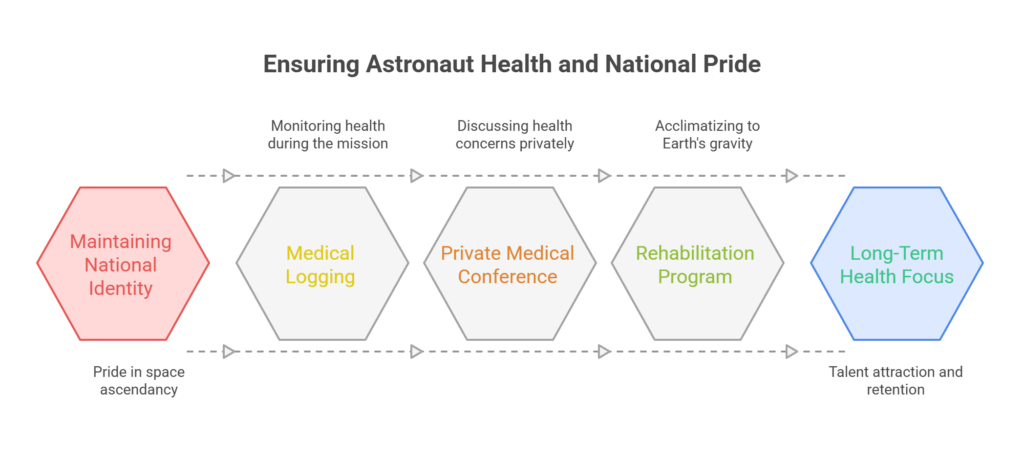
On July 13, during the farewell ceremony on the ISS, Shukla read aloud a moving message that reached the hearts of millions of Indians. Quoting Rakesh Sharma’s legendary lines of 1984, he boldly asserted,”India is still saare jahan se accha,” explaining India from outside space as “ambitious, fearless, confident, and proud”. These lines of his were not a mere personal observation; they were a strong statement of national ego and a vision for the future. “This mission is not an individual achievement,” he declared, “but a testimony to what human beings can accomplish collectively. I hope that our efforts encourage young Indian minds and those around the globe to think beyond horizons”. ISRO Chairman S. Somnath joined the national chorus congratulating the astronaut, highlighting the monumental significance of the mission as a stepping stone towards independent Indian human spaceflight capability.
The self-conscious mention of Rakesh Sharma’s 1984 flight and Shukla’s repetition of “Saare Jahan Se Accha” is more than a tip of the hat to history. It self-consciously connects Shukla’s feat to an origin moment in India’s space program, establishing a line of national heroes. The large-scale popular and political expectation for his return marks the strong emotional identification that the country has with its space efforts. This is not only a scientific achievement but a cultural reference point. This carefully managed use of historical successes creates an atmosphere of continuity and improvement, keeping national identity and pride in ascendancy, and gaining the public’s powerful narrative hook. In addition, the reference to a “week-long rehabilitation program to acclimatize to Earth’s gravity” following an 18-day mission, in addition to previous references to “medical logging” and “private medical conference” on the ISS, suggests an overall consideration of astronaut health that extends beyond the mission’s duration. This will have ensured ISRO’s dedication to astronaut safety and long-term health, essential for talent attraction and retention for future, potentially longer, missions. It also involves a strong medical and physiological research pillar in the Gaganyaan project, to counter the effects of space flight on the human body.
Gaganyaan and Beyond: India’s Next Giant Leap
Paving the Way: Ax-4 as a Stepping Stone
Group Captain Shubhanshu Shukla’s flight to the ISS is a crucial stepping stone towards Gaganyaan, India’s ambitious project to send humans into space on its own technology. It has given ISRO precious “hands-on feedback on spacecraft systems integration, ground communication protocols, and emergency response procedures,” all essential building blocks for the future Gaganyaan mission.
The scientific results of his tests will certainly have an impact on mission planning as well as academic and industrial research in India. Shukla’s demanding training schedule for Ax-4 is now a model for the practical training of future Indian astronauts, highlighting the physiological and psychological standards ISRO needs to achieve through its astronaut selection and training programs for Gaganyaan. His “hands-on experience will be of immense value for the future Gaganyaan missions, as it will bring in real-world experience and enhance India’s technological prowess” in ways that simulations just can’t.
The Future is Now: India’s Limitless Space Ambition
India’s Gaganyaan mission, on which Shukla and three other candidates have been chosen, is aimed at sending a three-member crew on Low Earth Orbit (LEO) for a maximum period of seven days in a crew module and an indigenously built launch system. With its maiden crewless test flights planned for 2025 and a manned flight planned for 2027, Gaganyaan will make India the fourth country—following the United States, Russia, and China—to independently launch people into space. Technologically, it is a quantum leap, necessitating a human-rated rocket, sophisticated re-entry systems, and intricate life-support systems that India is designing from scratch.
This flight is not an isolated success; it’s a “strategic national objective” that will clearly enhance India’s international reputation, propel research into advanced materials and bio-sciences, and act as a strong driver for increased participation in lunar and interplanetary exploration.
The investment in the Ax-4 mission (approximately Rs 550-600 crore in training and expenses) has already generated considerable excitement and expansion in India’s young space start-up economy. Most importantly, “many domestic players, from universities to biotech startups,” were engaged in designing and developing the payloads for Axiom-4, setting the stage for a “robust space-tech ecosystem” domestically. This indicates that India’s human spaceflight program is intended to be a national driver of innovation, rather than a government initiative. By engaging various domestic players, ISRO is deliberately building a self-sustaining domestic space economy, generating employment opportunities, stimulating research, and developing indigenous capabilities across the board.
Ultimately, this majestic undertaking motivates a new generation of scientists and engineers by bringing human spaceflight within the reach of the nation. India sees human spaceflight as a key enabler of its wider national goals, a declaration of technological sovereignty, a talent magnet, and a stepping stone to deeper space missions in the future. Group Captain Shukla’s pioneering role on the Ax-4 mission is the concrete first step in confirming the human factor of this grand strategy, demonstrating India’s preparedness for the next, even greater, giant leaps into the universe.
Conclusion: A Legacy Forged in the Stars
Group Captain Shubhanshu Shukla’s groundbreaking 18-day mission on the International Space Station was a giant leap, India’s first human presence on the station, and a successful return to human spaceflight for India after 41 years. He completed a series of seven Indian-conceived experiments, as well as other key research, sending precious data toward future space exploration and providing concrete solutions to issues back here on Earth. His odyssey represents India’s quiet resolve and its transformation into a nascent space-tech power, which is shaping up to be a triumph of what national pride and forward-looking discipline can do.
The mission has given the Gaganyaan program invaluable on-the-job training, bolstering India’s native capabilities and developing a strong, autonomous space-tech ecosystem. In addition to that, it has greatly improved India’s profile in international space diplomacy, promising routes of future global collaborations and establishing the nation as a major partner in humanity’s common cosmic journey. As India gears up for Gaganyaan and beyond, the way of Group Captain Shubhanshu Shukla will surely pave the path. His endeavour is not an endpoint but a potent start—a reflection of what “humanity can do together” and a constant source of inspiration for young minds all over India and the world to “dream beyond boundaries”. He has, literally, pointed us to the stars, and in doing that, has led India’s infinite aspirations in the universe.








